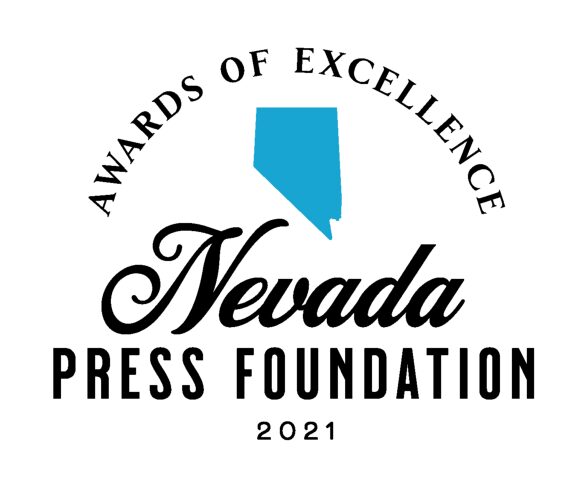D. Brian Burghart
Reno News & Review
Fatal Encounters Series
Judge’s comment:
Powerful series on an important issue, with ties to national news stories and the growing concern about government abuse of power and the public’s distrust of all officers because of the hidden truths in a few cases.
Several stories and series were close, all with strong writing and art coupled with important issues on local and/or national levels. This one edged out the others because of its difficulty with reporting substantial facts, its impact across the country, and its longterm reach into the legislative process.
The depth of reporting elevated this one above the many other entires which were compelling, emotional and relevant on a local, as well as national, scale.
The nomination:
May 25, 2015
To the judges:
May 18, 2012: I was on my way home from my job as the editor of the Reno News & Review when I drove past a scene of chaos. My gut told me that either a cop or a criminal had died there; there were too many uniforms, too many police cars, too many serious faces.
Later, at home and curious, I booted up my laptop. How many people are killed by police in Nevada every year? How many in the United States? The statistics were all over the place.
I found many government reports that waltzed around the question: justified homicides, deaths in custody, arrest-related deaths. The numbers were inconsistent and perplexing. It was clear our government did not comprehensively track statistics about people killed by law enforcement. In fact, nobody did.
Americans should be able to answer simple questions about the use of deadly force by police: How many people are killed? Are fatalities increasing? What do those people look like? Can policies and training be modified to have fewer officer-involved shootings and improve outcomes and safety for both officers and citizens?
Those answers would require a database, and at the RN&R, we resolved to build one.
We were naive. We thought we’d make Freedom of Information Act requests of the Department of Justice for the addresses of all the state and local law enforcement agencies that participated in the FBI’s Uniform Crime Report, and then make public records requests for documents relating to officer-involved homicides. But the FBI stonewalled — after multiple requests over months, there was a final, Orwellian and useless response — so we turned to “the crowd.” Information about officer-involved homicides was generally reported in the media; all we needed was help collecting it. In April 2013, we began developing a website that would document officer-involved homicides going back to 2000. Starting in December 2013, we began making public records requests of all Nevada law enforcement agencies. We launched Fatal Encounters.org on Feb. 27, 2014, to coincide with the publication of the first package of the Reno News & Review’s six-part Fatal Encounters series. While the first package fell outside the contest year — in accordance with contest rules, I’ll exclude it — the other five packages and supporting editorials, etc., are within it. The database has grown from that start of 500 to nearly 7,000 entries, which include information from approximately 2,000 public records request. National news media almost immediately took notice, but when police killed Eric Garner in July and Michael Brown in August, the issue caught fire. National media began turning to us and by the end of August, CNN, Gawker, and the Washington Post had all referred to our data collection efforts. Even The Daily Show with Jon Stewart, a show that young people frequently say is their main news source, featured our newspaper in a segment about the lack of officer-involved homicide data. The national media were also reporting the fact that the FBI was not collecting comprehensive information. Scripps News Service, the Washington Post, Nate Silver’s FiveThirtyEight, USA Today and many others did stories.
And the RN&R was cited in many of them.
It wasn’t just the media taking notice, either. Universities from Columbia University to Georgia State University to University of North Carolina, Chapel Hill to California State University Fullerton began using our data for many different kinds of projects. Groups like the Color of Change used our data. (For example, Color of Change used FE data to create a Twitter campaign in which the image and biographical information of an African-American who’d been killed by police was tweeted every hour for the month of October.)
The massive public and media interest brought an avalanche of data through our submission form, growing the database on a daily basis. FatalEncounters.org became one of the United States’ largest crowdsourced journalism efforts when, by numbers of incidents, the crowdsourced material surpassed the database’s public records foundation.
The RN&R enabled citizen journalists around the world to research and upload specific incidents of officer-involved homicides to be edited and added to the public database.
Thousands have participated with data, visualizations, movies, analysis, reporting and cash.
U.S. Rep. Alan Grayson of Florida attested to the value of Fatal Encounters: “[This] work is critical to complementing our legislative efforts. I believe the Department of Justice will not compile such a database unless it is forced to do so by a competing credible academic database.”
On Dec. 10, 2014, the Death in Custody Reporting Act of 2013 passed the Senate with unanimous consent. President Barack Obama signed it on Dec. 18. The law required the Attorney General to collect information regarding where, how often, and under what circumstances police kill people. The flawed DCRA was the topic of our sixth and final installment of the Fatal Encounters series in the RN&R, published on Dec. 31.
It would be arrogant to claim that our little 30,000 circulation alternative newsweekly with its four-person editorial staff had much to do with Congress passing a law they’d been sitting on for a year. It would also be false modesty to say we had nothing to do with it. Our database is at 7,000 records now, with 12 complete states, but the data suggests we’re only 35 percent of the way to our comprehensive database. In summer 2014, we formed a 501(c)3 to sustain the effort. We thank you for considering “Fatal Encounters” for Story of the Year for the Nevada Press Association’s Better Newspaper Contest.
Sincerely,
D. Brian Burghart
Editor/publisher, Reno News & Review
 Nevada Press Association The best in Nevada journalism since 1924
Nevada Press Association The best in Nevada journalism since 1924


